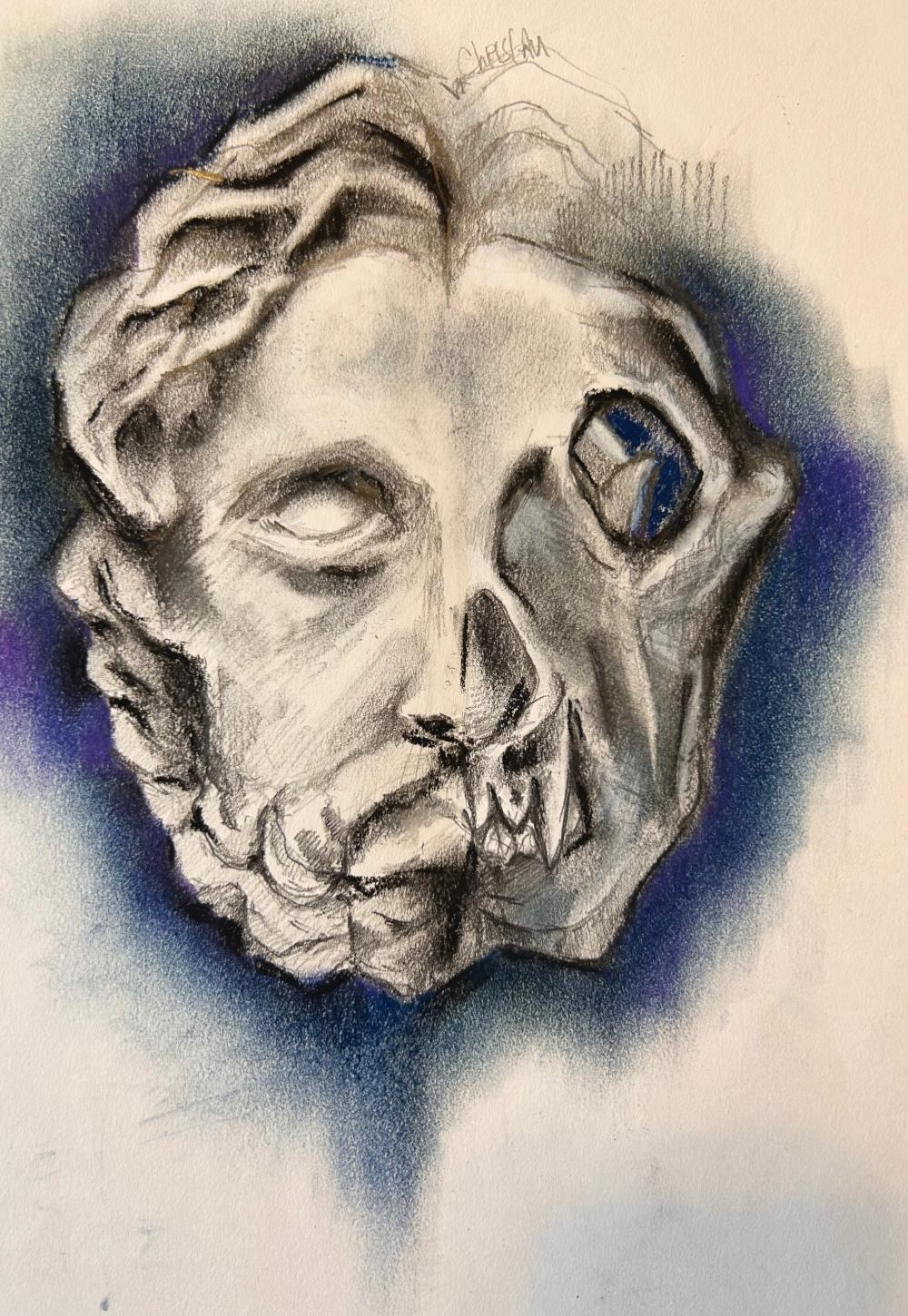
Abstract
Nonhuman animal research has contributed to human health advancements but raises questions about the extent to which humans protect nonhuman animals during such endeavors. This series of drawings explores several ethics and empirical questions from a visual point of view.
Figure 1. Animal Heart

Multiple animal skulls are assembled into the shape of a human heart, offering a visual interrogation of whether and to what extent potential benefits to human health of nonhuman animal research can express respect for the value of nonhuman animal life.
Figure 2. Man & Animal No. 1

The head of Aesculapius, the Greek god of healing, is represented as half human on the left and as half dog skull on the right. This drawing invites consideration of whether and when human health benefits outweigh nonhuman animal suffering that might promote them.
A half-human and half-dog skull is at the center of the drawing. Multiple history of art references (eg, the hand of man and God from Michelangelo’s fresco The Creation of Adam in the Sistine Chapel, the Monument to the Laboratory Mouse, the Aesculapian snake, and flowers in the style of Dia de Los Muertos) and syringes radiate from the skull. Empirical questions, in addition to ethical questions, prompt our consideration about whether and when nonhuman animal models accurately reflect human physiology and diseases and enable scientifically valid research. Is adherence to federal animal use and care guidelines1 ethically sufficient to promote transparency and human stewardship accountability?
Figure 3. Man & Animal No. 2

References
-
National Research Council. Guide for the Care and Use of Laboratory Animals. 8th ed. National Academies Press; 2011.



